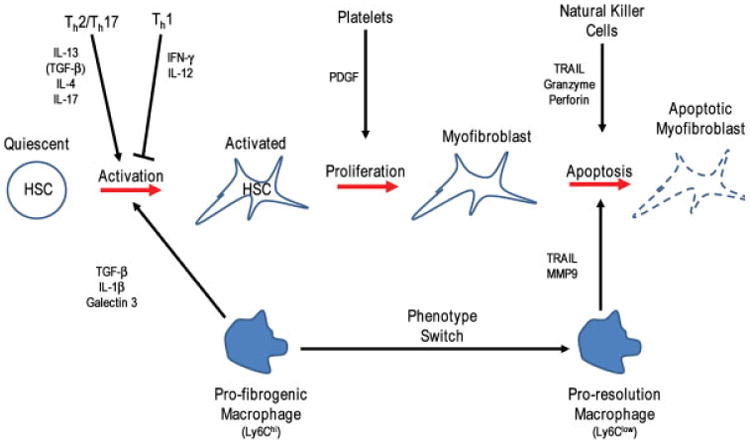Fig. 1.

Multiple interactions between immune and profibrogenic cells. The progression of hepatic stellate cells (HSCs) from the quiescent to activated, to myofibroblasts, and eventually apoptosis is greatly influenced by paracrine signals from infiltrating blood monocytes which become tissue macrophages. At the initiation of injury, these tissue macrophages provide activation and proliferation signals, and during the resolution phase they provide apoptotic and reversion signals, but also actively digest and remove excess extracellular matrix. Additionally, innate (natural killer) and adaptive (Th1, Th2, and Th17) immune cells provide signals that can increase or decrease macrophage mediated fibrogenesis. Indirect cytokine production is shown in brackets. IL, interleukin; PDGF, platelet-derived growth factor; TGF, transforming growth factor.
